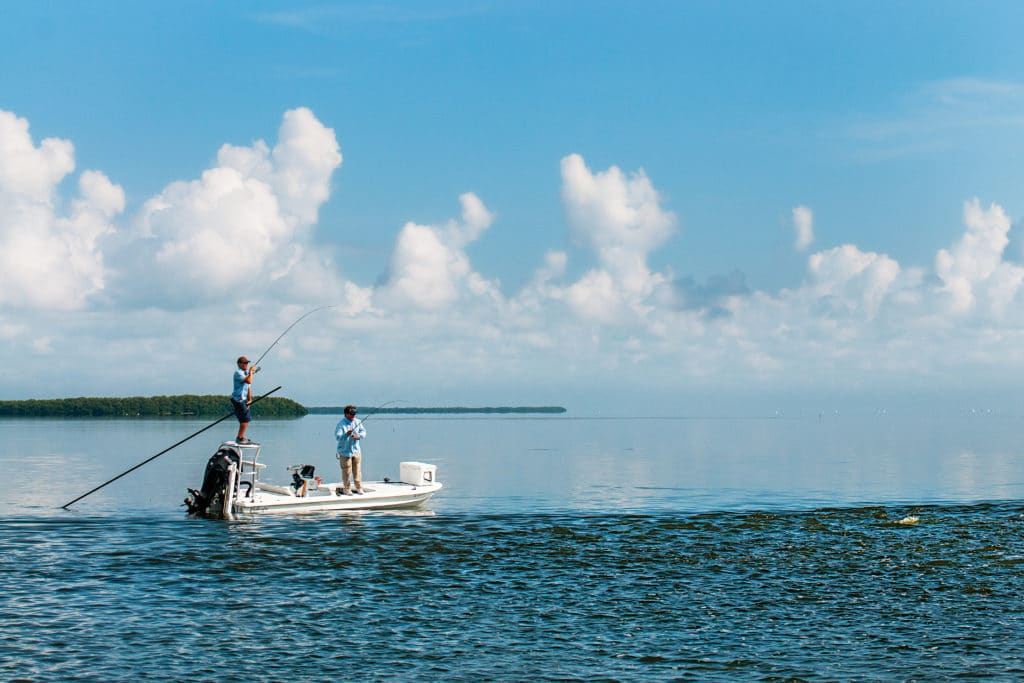
In its purest form, shallow-water fishing is a visual sport, with movement the most obvious way to zero in on the target. Tails or fins breaking the surface, flashes, rolls, wakes and bait being chased are glaring signs. But other, more subtle hints also tip off the presence or likelihood of fish. I spoke to three veteran guides about what they look for on the flats based on decades of experience in their home waters.

Capt. Steven Impallomeni, South Florida and The Florida Keys: “Read the surface; look for wakes, nervous water, pushes or humps. Anything that breaks up the normal water pattern pinpoints the presence of fish. And don’t be afraid to look too close or too far. If the visibility is good, it is possible to see signs several hundred yards away or you may be right on top of some laid-up fish.”
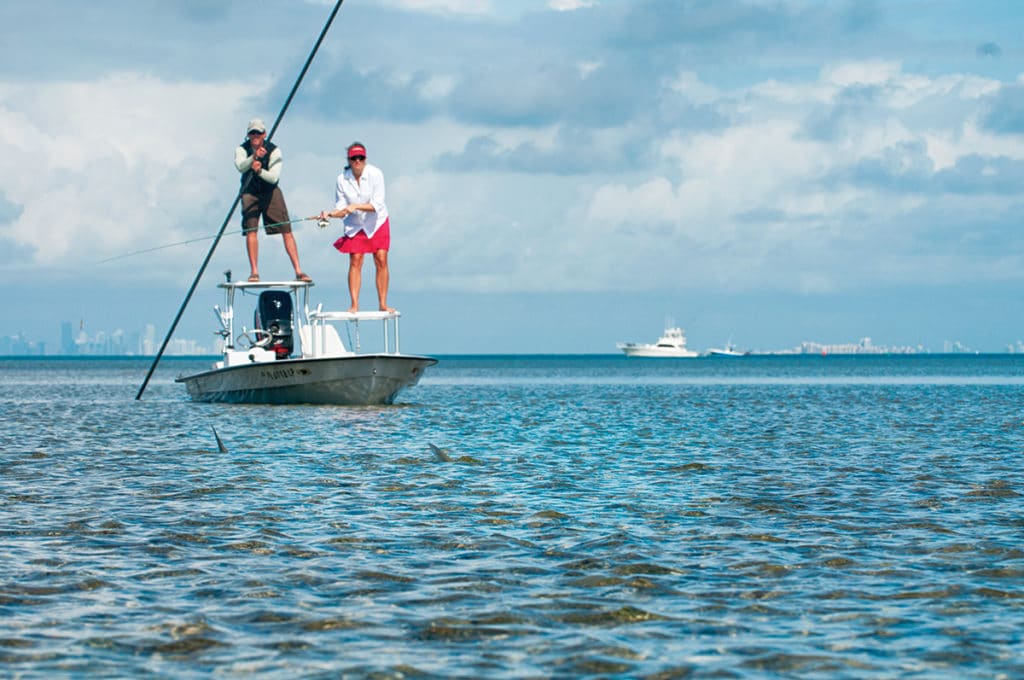
Capt. Steven Impallomeni, South Florida and The Florida Keys: “I take a slow approach to get a good visual reading of a flat beforehand, searching for the edges, channels and contours,” he explains. “I constantly shift my gaze, looking for movement. Darker shapes, shadows and straight lines, anything that’s not natural-looking bottom, are all clues. I always start on the outside edge and work on top as the water rises,” he adds. “Once the tide starts dropping, I move to the back edge to intercept fish as they return to deeper water.”
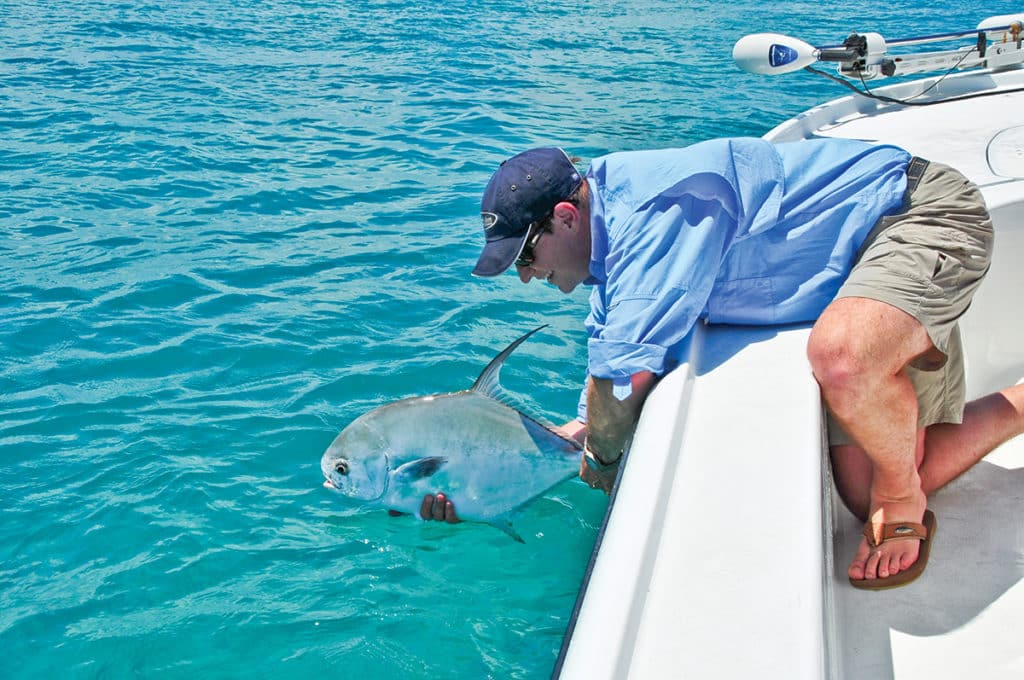
Capt. Steve Impallomeni, South Florida and The Florida Keys: For bonefish and permit, Impallomeni looks for flats in depths of 3 feet or less where the bottom is a mixture of sand and turtle grass. Tarpon, on the other hand, normally prefer 3 to 8 feet of water. If Impallomeni spots fish, he’ll linger and pole around quietly for up to 20 minutes to determine if more are coming through. He says that lower Keys bonefish no longer tail as frequently as they used to, so he searches for moving or mudding fish instead. He still finds large schools on occasion. While fishing the Content Keys in June 2013, he came across a group of about 300 bonefish ranging from 5 to 7 pounds. Last summer, on a half-day charter north of Key West, he found another school of 300 fish, only this time they were tailing permit. Impallomeni adds that larger groups are easier to spot, but the clues and comfort zones are the same whether it’s only one fish or a school of 100.
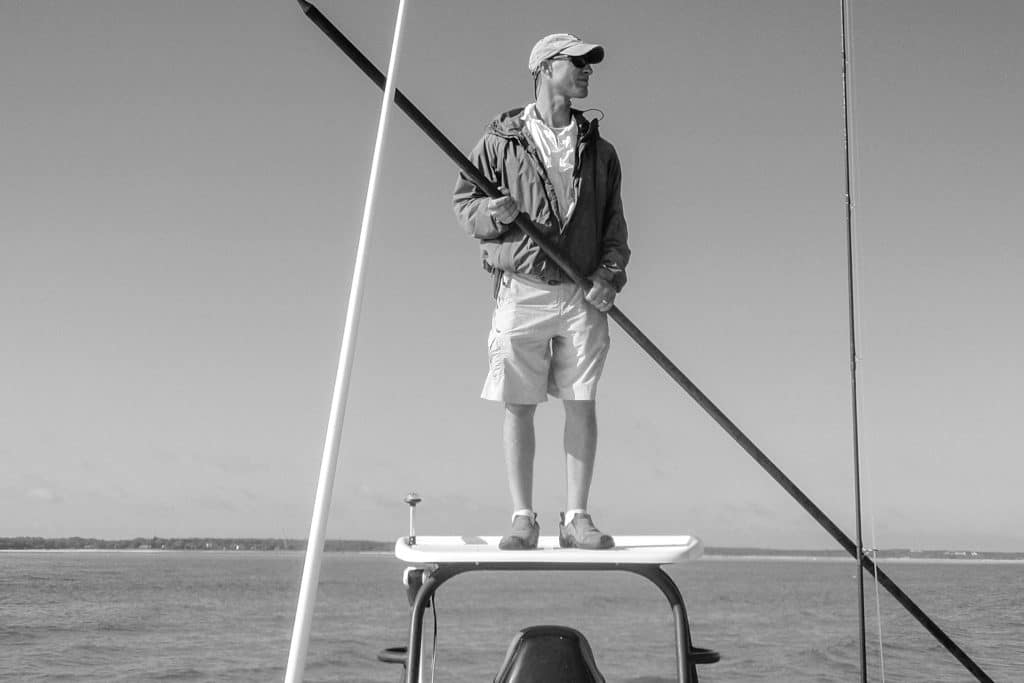
Capt. Will Raye, Cape Cod, Massachusetts: “Even though our bottom is hard-packed sand, subtle structures, like shallow troughs, change constantly. You figure out the smaller details by paying attention to the tide, wind and latest conditions. But in the end, you’ve got to get up on a flat to actually see where it is shallow or deeper and adjust from there.”
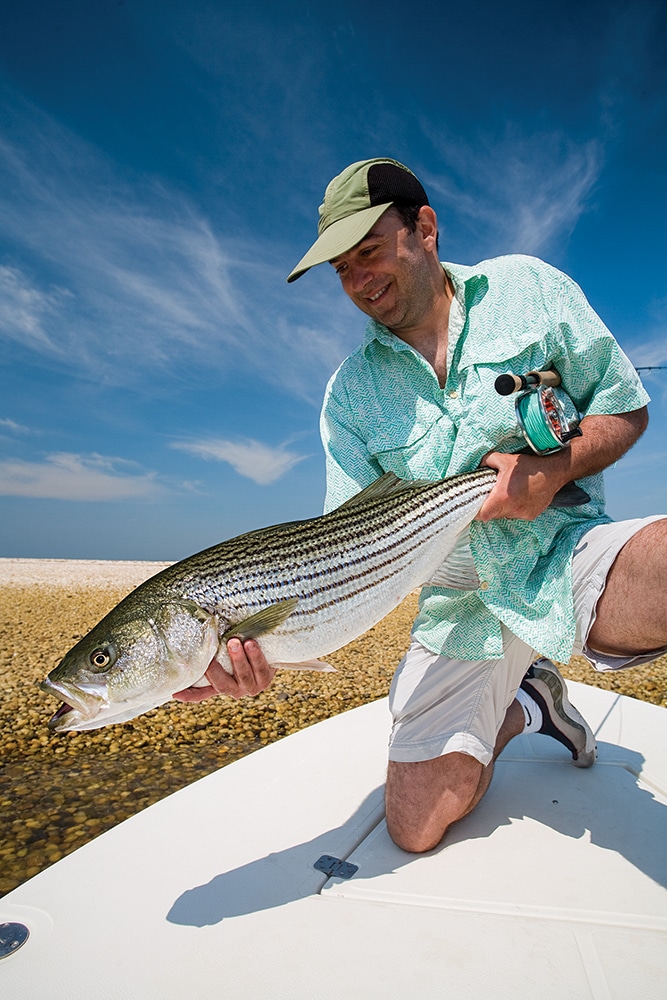
Capt. Will Raye, Cape Cod, MA: Despite a shorter season in New England, the shallow flats of Cape Cod Bay, Monomoy and Barnstable in Massachusetts are sight-fishing jewels. With hard sand bottom and sparkling clear water continually flushed by tidal swings of up to 10 feet, Capt. Will Raye guides fly and light-tackle anglers in his 20-foot ActionCraft. He targets striped bass of up to 40 inches and bluefish pushing 15 pounds. The region’s flats range from 1 to 4 feet in depth, with an average of 2½ feet. “With our bigger tides, the water moves fast and carves small channels through the flats,” Raye explains. “The fish use those channels to travel from point A to point B. They sometimes stop and feed along the way, mainly on sand eels. But for the most part, they just keep moving steadily.
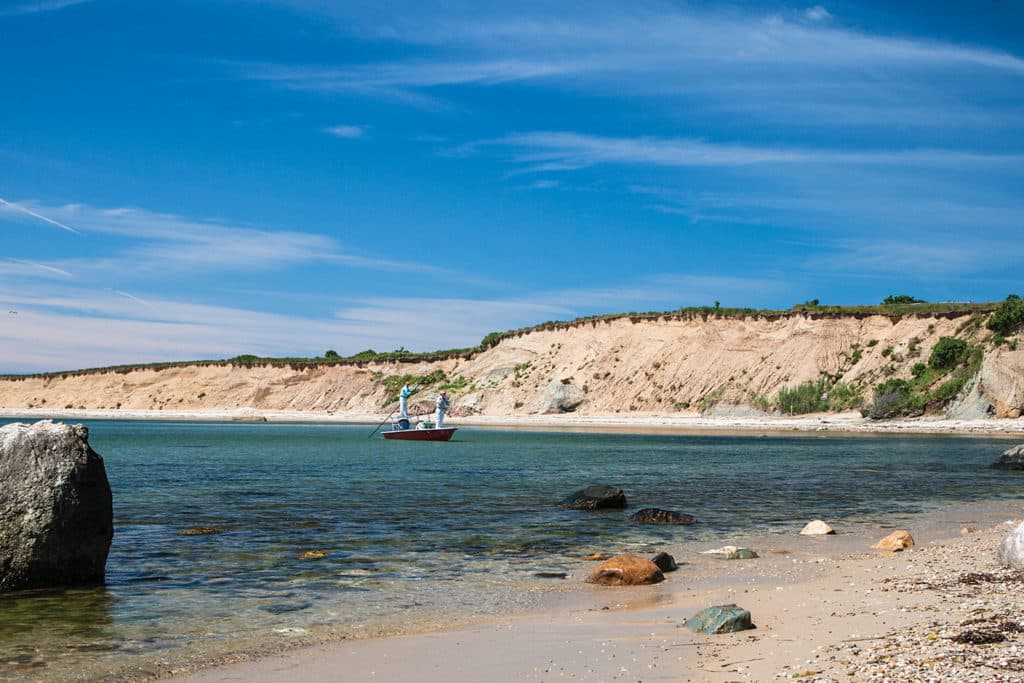
Capt. Will Raye, Cape Cod, MA: “I target flats adjacent to deeper drop-offs and look for subtle passageways on top. An area even 2 inches deeper is usually enough of a difference to funnel fish. Stripers are more comfortable swimming against the tide, so we cast up-current to swing the baits down to them,” adds Raye. “In the places I fish, there’s a certain stability in the bottom, with only microchanges throughout the season. The fish do return to certain spots every year. You just have to hunt and find them.” Raye poles his boat up onto a flat and searches for fish moving across. When he spots them, he uses his Power-Pole to hold position and waits to see if more will push through. If none appears, he continues searching. Raye occasionally encounters fish with their backs exposed but says they’re very uncomfortable in water that skinny. In that situation, he usually anchors the boat and hops over the side to stalk them on foot. This stealthier approach to the shallow channels greatly increase his chances for a hookup.

Capt. Scott Sommerlatte, Texas/Gulf Coast: “The best depth finder in the world will not identify contours in water less than 4 feet deep. All you can do is pole and look for the drops and edges. It comes down to local or acquired knowledge. Reading the surface does little good if you don’t know what’s happening underneath.”
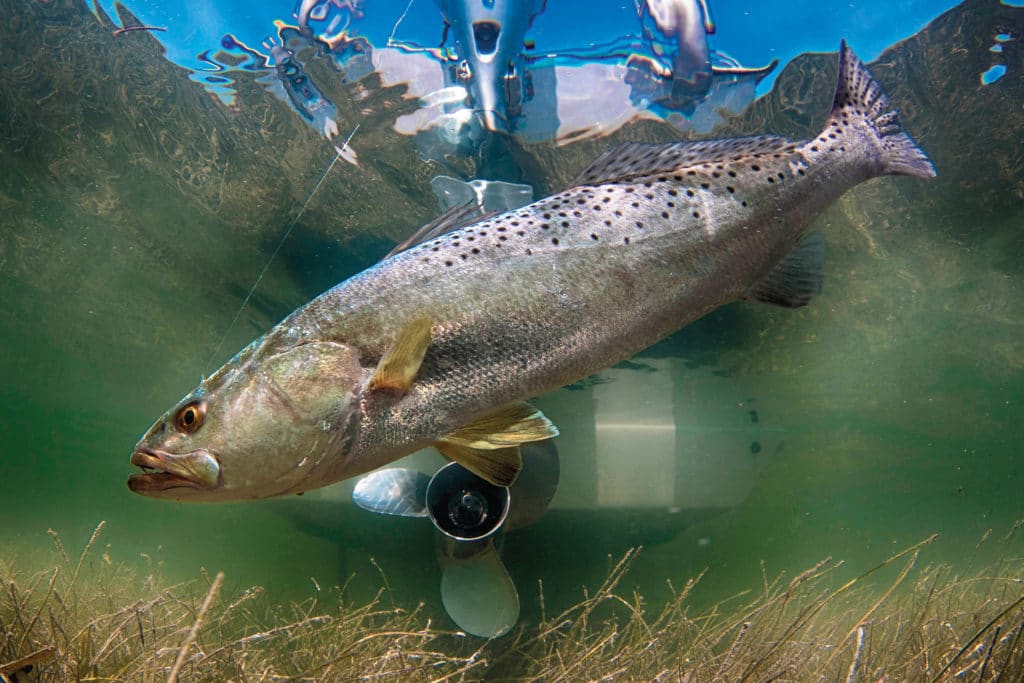
Capt. Scott Sommerlatte, with 25 years of experience fishing the Texas Gulf Coast, focuses on bait, current and subtle differences above and below the surface in his pursuit of redfish and spotted seatrout. “If you’re looking for reds, mullet don’t even factor in,” he says. “In our region, a redfish’s life revolves around shrimp and crabs, so if there has been rain upstream and along the coast, you’ll find both the shrimp and the reds. And current determines whether the fish will feed. I look for tailing reds on flats close to passes where the current is strongest. The difference between our high and low tides is 2 inches, so if you can figure out where the water is moving, you’ll find the fish.”
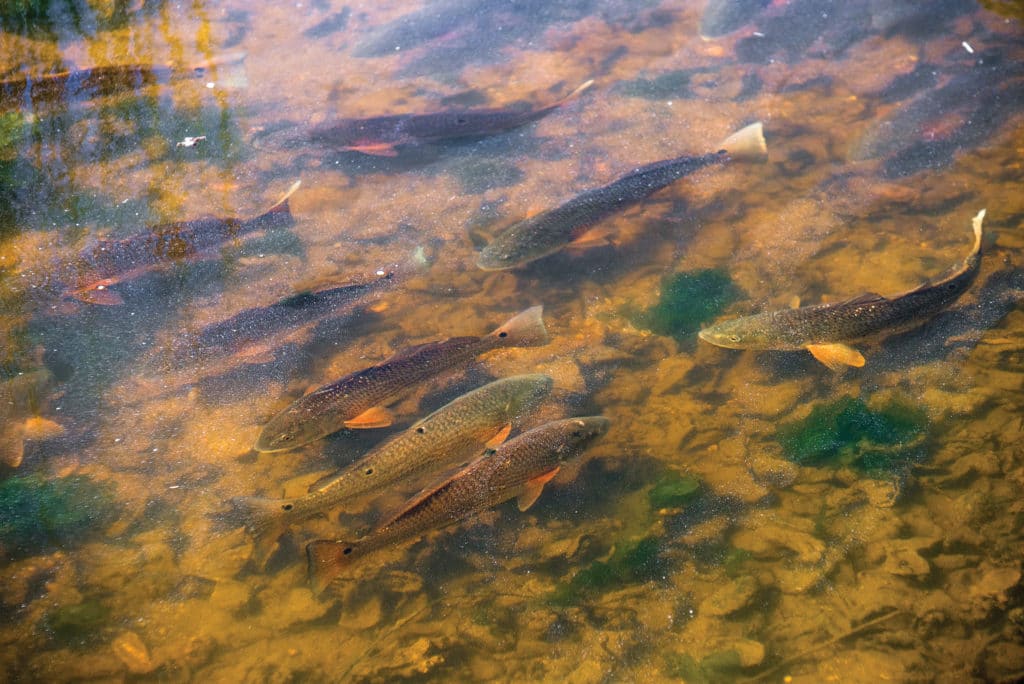
Capt. Scott Sommerlatte, Texas/Gulf Coast: Concentrations of mullet and other baitfish are the key to locating trout, according to Sommerlatte. He looks for water “shaking” as a result of bait schools chased to the surface by pursuing predators. He also keeps a close eye on his fish finder because bait and trout are sensitive to fluctuations in water temperature. In the heat of summer, trout prefer hard sand bottom with scattered grass because it is cooler. In winter, Sommerlatte concentrates on mud and shell bottom because such areas retain heat and are usually a degree or two warmer. Sommerlatte also assesses a flat visually by stopping short and scanning before poling ahead. “One of the greatest tools in the boat is a pair of binoculars,” he says. “Use ’em and you’ll catch more fish.”
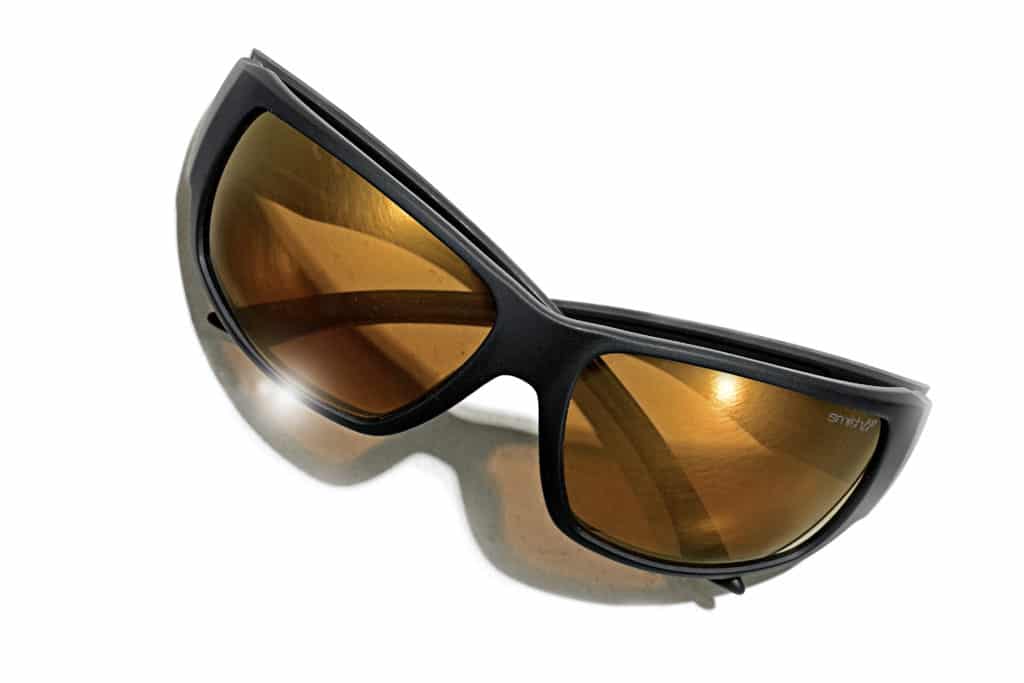
Capt. Dave Lear: Frames with wide temples or side shields block more ambient light and help you spot fish. But not all polarized lenses are equal. Copper lenses are the top choice for inshore flats because that tint enhances contrast and color. Amber, which brightens the field of vision, is another good option for the shallows. Green mirror lenses are encapsulated coatings over a copper or amber base. The mirror finish amplifies visual acuity. Finally, sunrise or yellow lenses are a specialty tint that provides high contrast and maximum light penetration, ideal for overcast days or low-light conditions.









